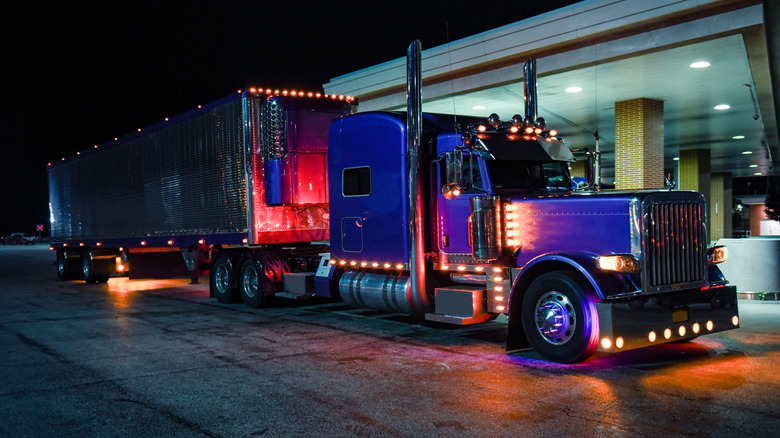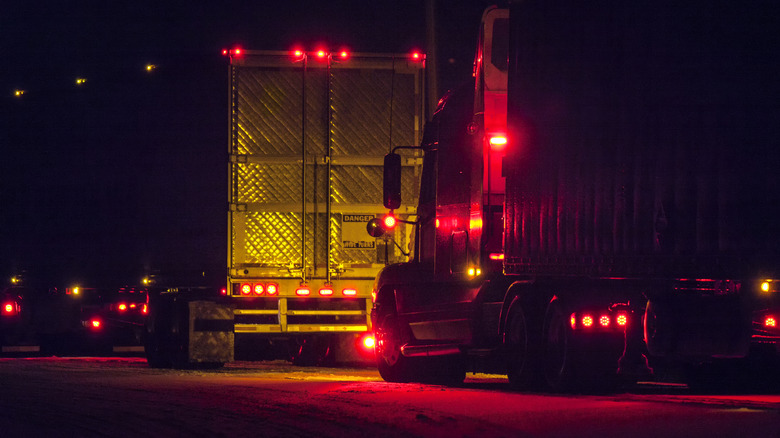Why Do Some Semi-Trucks Have So Many Lights?
Semi-trucks have a lot of gears, but they have a lot of lights as well, and some can have more than others. While those extra lights might look flashy, confusing, or even a little mesmerizing, there's actually more going on than just decoration.
Semi-trucks are incredibly well lit thanks to the U.S. Department of Transportation. In addition to the two headlights, which drivers can flash at you, two red rear stop lights, two amber turn signals, and white license plate lights, the DOT also requires amber side marker lights. These lights are located at the front and rear corners of the trailer and are paired with reflectors on every corner. Clearance lights are mandatory on both sides of the trailer, and nothing can block any of these lights or reflectors. There are even more rules for wide trailers over 80 inches. In addition to the marker lights, these trailers must have side reflectors that need to be visible from at least 50 feet away. Rear brake and signal lights must be mounted between 15 and 72 inches from the ground, and any blinking lights must flash between 60 and 120 times per minute.
All of these lights work together to show where the truck is and how big it is, which makes things safer for everyone on the road. For drivers hauling these massive rigs, good lighting isn't just helpful, it's essential. It helps them see better, stay safe, and handle the road with a little more confidence.
Semi-truck drivers can install more lighting than required, within reason
Federal rules regulate the lights semi-trucks have, but truck drivers have to follow state lighting laws as well, which can vary from one state to the next. Some states restrict certain light colors, like red or blue, since those are reserved for emergency vehicles. Other states set minimum brightness levels to make sure trucks stay visible in all conditions.
But while semi-trucks follow the same lighting regulations overall, there are some instances where drivers can go above and beyond what the guidelines require. Some choose to use spotlights or floodlights to make nighttime tasks like loading or unloading cargo in the dark a little easier. Spotlights give off a narrow, focused beam that helps highlight specific areas, while floodlights cast a wider glow, lighting up more of the surroundings. Then there are underbody glow lights, which could be illegal to use on cars, based on the state. These lights don't really serve a safety function but do add some visual flair during night drives.
Roof-mounted light bars could also be added, providing both function and a tough look. The same is true for colored LEDs that make marker lights stand out. Some drivers even go for custom tail lights with unique shapes and patterns or sequential turn signals for a more high-tech vibe. But even with customization, semi-truck drivers have to be mindful and keep federal and local laws in mind.

